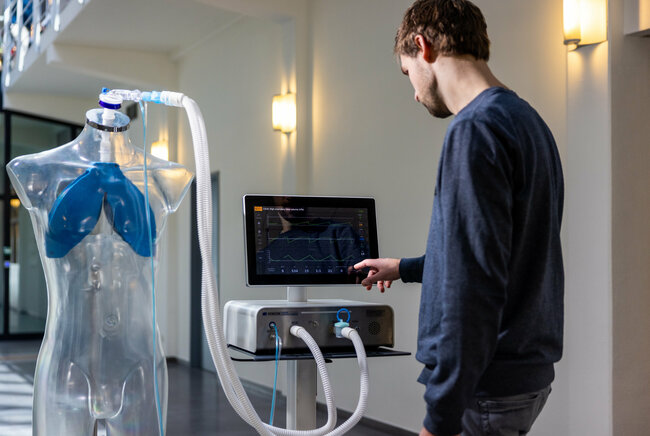More and more mission critical systems are using AI for improved security, safety and health
Longstanding TU/e and JADS partner Demcon launches data-driven solutions business line.

Increasingly, more and more mission-critical systems make use of embedded AI to improve security, safety and health in various applications.
Illustrative of this trend is the announcement of Demcon to launch a new data-driven solutions business line.
Daniel Kapitan, EAISI Fellow and lecturer, had a Q&A with David Rijlaarsdam, alumnus from the JADS/EAISI Professional Education and managing director of this new initiative, on the relevance of developing and engineering trustworthy AI.

It is good to see how things have progressed since we met during your time at JADS. Could you share your experience on the challenges that you faced in executing the digital transformation at Demcon?
David Rijlaarsdam: "For me, the key element in successful application of data science remains starting from a concrete use-case. AI (or any other similar term used for that matter) is often easily used, also in places where the added value is not clear (yet).
Across our core markets, we aim to evaluate the cases that we assess for our customers very stringently before continuing with development.
The next challenge is generally data, or more specifically annotated data. Availability and quality of data is assessed early on in our development process and data augmentation is often required to facilitate algorithm development.
On a personal note, I have to admit that it sometimes bothers me that cases that are very interesting from a research point of view have an insufficient (business) case to move towards project execution. Luckily, we have several cooperations with academia and hospitals that allow us a little more room to explore in certain areas."
I was particularly interested to read about your data-centric approach to AI. Could you elaborate on that?
"A lot of our work uses images and other sensor data to improve health and safety. Think of automatically detecting when perishable goods are past their consumption date.
We also work in autonomous system design, for example, training autonomous robots to perform physical tasks in complex environments.
While machine learning on images is quite commonplace, we find that developing reliable systems for these very specific and mission-critical tasks, we often lack high-quality, annotated data. This connects with the in-house competence of generating photo-realistic imagery and allowed us to develop tools and techniques to synthesize training data. Structured data generation and validation through simulation provide a means to improve the performance a reliability of embedded AI.
The challenge is that synthetic data must be both sufficiently truthful and contain the desired variation. And, of course, it must fit the application and technical implementation our customer needs."

I like the way how you combine a first principles approach with modern statistical machine learning. Demcon and TU/e are currently researching how we can improve ventilation machines in the ICU. Being a mechanical engineer yourself, can you share some insights on this?
"This was also the topic of my own final project at JADS, incidentally.
Since then, the model has been refined further by our experts and we are currently extending cooperations with both academia and hospitals to accelerate this development.
For example, we work on algorithms to help clinicians indicate whether the pumping system is acting synchronously with the breathing of the patient, which helps improve recovery.
Moreover, similar algorithms are used to estimate treatment-relevant patient parameters and process sensor data obtained by, for example, surface electromyography. In general, we always aim to apply more traditional methods and only move to advanced (deep) learning methods if required."
Interested to read more on embedded AI and projects at Demcon?
"This paper explains the synthetic lung model that has been developed at the department of Mechanical Engineering at TU/e. With this model, Lars van de Kamp generates synthetic data that are used to train algorithms to detect patient-ventilator-asynchrony. Also see this page for more examples of applications of AI across different domains.